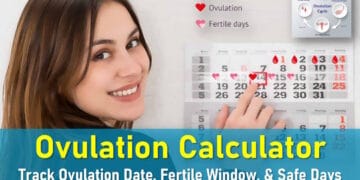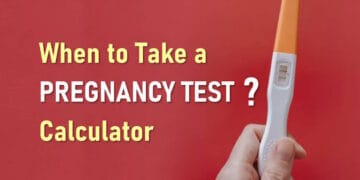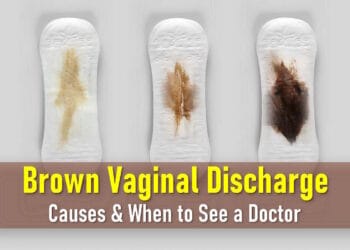Gallbladder pain refers to discomfort caused by conditions affecting the gallbladder, a small organ that plays a key role in digestion. The most common gallbladder issues leading to pain include gallstones, inflammation (cholecystitis), infections, and blockages in the bile ducts. Symptoms often flare up after eating, particularly fatty foods, and the pain can range from mild to excruciating, sometimes radiating to the back or chest.
What Is the Gallbladder and What Does It Do?
The gallbladder is a small, pear-shaped pouch located beneath the liver in the upper right abdomen. Its primary gallbladder function is to store and release bile, a digestive fluid produced by the liver that helps break down fats. When you eat, the gallbladder contracts, sending bile through the bile ducts into the small intestine. Problems arise when bile flow is blocked or the gallbladder becomes inflamed, leading to gallbladder pain and other gallbladder symptoms.

Where Is Gallbladder Pain Felt?
The gallbladder pain location is typically in the upper right abdomen, just below the rib cage. However, the discomfort can sometimes spread to the center of the abdomen, back, or even the right shoulder, a phenomenon known as referred pain. This happens because nerves in the gallbladder share pathways with those in other areas, making the pain seem like it’s coming from a different location.
What Does Gallbladder Pain Feel Like?
While experiences vary, most people describe gallbladder pain as:
- A sudden, sharp, or stabbing pain in the upper right abdomen
- A constant, dull ache that worsens after meals
- Pain that radiates to the back or shoulder
- Severe cramping that makes it hard to sit still
Unlike typical stomach aches, gallstone pain doesn’t improve with movement, passing gas, or bowel movements. Deep breathing may even intensify the discomfort. In some cases, the pain is so intense that people mistake it for a heart attack.
Other Gallbladder Disease Symptoms
In addition to pain, other gallbladder disease symptoms may include:
- Jaundice (yellowing of the skin or eyes)
- Nausea and vomiting
- Fever or chills (signs of infection)
- Dark urine or pale stools
- Bloating and indigestion
If you experience these symptoms along with severe pain, it could signal a gallbladder attack, which requires medical attention.
How Long Does Gallbladder Pain Last?
Gallbladder pain typically lasts anywhere from 15 minutes to several hours. If the pain persists beyond a few hours, or is accompanied by fever, vomiting, or jaundice—it could indicate a serious condition like gallbladder disease or a blocked bile duct. In such cases, immediate medical care is necessary.
What Causes Gallbladder Pain?
The most frequent cause of gallbladder pain is gallbladder stones, also known as gallstones. These hardened deposits form from cholesterol or bilirubin and can range in size from tiny grains to large masses. While some people have “silent” gallstones with no symptoms, others experience intense pain when a stone blocks bile flow.
Other potential causes include:
- Bile duct stones: Gallstones that migrate into the bile ducts, causing blockages
- Cholecystitis: Inflammation of the gallbladder, often due to trapped gallstones
- Biliary dyskinesia: Impaired gallbladder movement, leading to poor bile release
- Cholangitis: Infection or inflammation of the bile ducts
Recognizing the first signs of a bad gallbladder, such as recurring pain after meals, indigestion, or nausea, can help you seek treatment before complications arise.
Gallbladder Polyps
Gallbladder polyps are small tissue growths that form on the inner lining of the gallbladder. Most are benign and cause no symptoms, but in some cases they can lead to:
- Inflammation of the gallbladder
- Obstruction of bile flow
- In rare cases (about 5%), potential cancerous changes
Doctors typically monitor small polyps through ultrasound imaging. Larger polyps (usually those over 1 cm) may require gallbladder removal as a precautionary measure.
Gallbladder and Bile Duct Cancers
Though rare, two types of cancer can cause gallbladder issues:
- Gallbladder cancer: This develops in the gallbladder’s inner layers and often goes undetected until advanced stages.
- Bile duct cancer (cholangiocarcinoma): This occurs in the bile ducts and is typically diagnosed late because early symptoms are subtle or absent.
Both conditions may cause persistent gallbladder pain, jaundice, unexplained weight loss, and appetite changes. Early detection is challenging, which makes awareness of symptoms crucial.
How to Manage Gallbladder Pain
Immediate Gallbladder Pain Relief
When experiencing a gallbladder attack, try these methods for gallbladder pain relief:
- Apply a warm compress to the upper right abdomen
- Drink peppermint tea, which may help relax bile ducts
- Consider a magnesium supplement to support gallbladder function
- Stay hydrated with small sips of water
Note: These methods may provide temporary comfort but don’t address underlying gallbladder disease. Persistent pain requires medical attention.
Best Sleeping Position for Gallbladder Pain
Many patients ask, “What side do you lay on for gallbladder pain?” While no position eliminates pain completely, lying on your left side may:
- Reduce pressure on the gallbladder
- Potentially help with bile flow
- Make the pain slightly more manageable
This position doesn’t substitute for medical treatment but may offer some comfort during an attack.
Treatments for Gallbladder Issues
Non-Surgical Approaches
Depending on your condition, doctors may recommend:
- Pain medication: For managing discomfort during attacks
- Antibiotics: If infection is present
- ERCP procedure: A non-surgical method to remove stones from bile ducts
Gallbladder Removal Surgery (Cholecystectomy)
When gallbladder symptoms persist or complications arise, gallbladder surgery may be necessary. The human body can function perfectly well without a gallbladder. There are three main surgical approaches:
- Laparoscopic cholecystectomy: The most common method using small incisions and a camera (quicker recovery, less scarring)
- Open surgery: Used for complex cases or when cancer is suspected
- Robotic-assisted surgery: Available at some specialized centers
Gallbladder surgery recovery time typically ranges from 1-2 weeks for laparoscopic procedures to 4-6 weeks for open surgery.
Preventing Gallbladder Problems
Gallbladder-Friendly Diet
A healthy gallbladder diet can help prevent stones and other gallbladder issues. Focus on:
- High-fiber foods (whole grains, vegetables)
- Lean proteins (fish, poultry)
- Healthy fats (avocados, olive oil)
- Low-fat dairy products
Foods to limit or avoid:
- Fried and fatty foods
- Processed snacks
- High-cholesterol items
- Sugary treats
Lifestyle Tips for Gallbladder Health
- Maintain regular meal times (skipping meals increases stone risk)
- Avoid rapid weight loss (which can trigger gallstones)
- Stay physically active (exercise improves bile flow)
- Stay hydrated (helps maintain proper bile consistency)
By understanding what the gallbladder does and how to care for it, you can reduce your risk of painful gallbladder attacks and maintain better digestive health.
Post-Surgery Concerns: When to Contact Your Doctor
After gallbladder removal, some patients experience persistent discomfort known as post-cholecystectomy syndrome. This condition affects up to 40% of patients and causes symptoms similar to pre-surgery gallbladder pain, including:
- Upper abdominal pain
- Nausea and vomiting
- Digestive discomfort
Potential causes include:
- Sphincter of Oddi dysfunction (a muscular valve regulating bile flow)
- Remaining gallstones in bile ducts
- Other digestive conditions like irritable bowel syndrome
Doctors may use an ERCP procedure to diagnose and treat these issues, sometimes widening the sphincter of Oddi during the same examination.
Conditions That Mimic Gallbladder Pain
Several health problems can cause pain similar to gallbladder symptoms. Understanding these differences helps identify the true source of discomfort:
Common Gallbladder Pain Lookalikes
- Appendicitis: Causes lower right abdominal pain (versus upper right for gallbladder issues)
- Kidney stones: Creates sharp flank pain with urinary changes
- Pancreatitis: Produces severe upper abdominal pain with nausea and vomiting
- Peptic ulcers: Leads to burning stomach pain, often relieved by eating
- Inflammatory bowel disease: Causes abdominal cramping with diarrhea
- Gastroenteritis: Results in widespread abdominal discomfort with vomiting/diarrhea
Differentiating Between Gallbladder and Liver Pain
While both organs occupy the upper right abdomen, key differences exist:
- The liver itself lacks pain receptors – discomfort comes from stretching of its surrounding capsule
- Gallbladder pain typically occurs after meals, especially fatty foods
- Liver-related pain often accompanies other signs like jaundice or swelling
Any severe or persistent upper abdominal pain warrants medical evaluation to determine its origin.
Potential Home Remedies for Gallbladder Pain Management
While medical treatment is often necessary, these approaches may offer some gallbladder pain relief:
- Dietary changes: Low-fat eating may reduce attack frequency
- Peppermint tea: May help relax bile ducts
- Apple cider vinegar: Some report temporary symptom relief
- Regular exercise: Associated with lower gallstone risk
- Moderate coffee consumption: May benefit gallbladder health
Important: Always consult your doctor before trying home remedies, especially after gallbladder surgery.
Post-Removal Dietary Adjustments
After gallbladder removal, some patients benefit from:
- Gradually reintroducing fats
- Eating smaller, more frequent meals
- Monitoring dairy and high-fiber food tolerance
Potential Complications of Gallbladder Disease
Immediate Health Impacts
Untreated gallbladder issues can lead to:
- Chronic pain and eating difficulties
- Unintentional weight loss
- Nutritional deficiencies
- Reduced quality of life
Serious Medical Complications
Advanced gallbladder disease may cause:
- Bile duct obstruction
- Gallbladder infection or gangrene
- Pancreatitis (pancreas inflammation)
- Peritonitis (abdominal cavity infection)
- In rare cases, gallbladder cancer
Final Thoughts
Persistent upper right abdominal pain often signals gallbladder problems. While gallbladder removal may sound daunting, most patients adapt well and find relief from chronic gallbladder pain. Early consultation with a healthcare provider can prevent complications and help determine the best treatment approach for your specific condition.
Frequently Asked Questions
What’s the quickest way to stop gallbladder pain?
For immediate gallbladder pain relief during an attack, try these steps:
- Take OTC pain relievers like ibuprofen (avoid if nausea is present)
- Apply a warm compress to your upper right abdomen
- Rest in a comfortable position (many find relief lying on their left side)
Warning: If pain persists beyond a few hours or comes with fever, jaundice, or vomiting, seek emergency care immediately as these may signal serious gallbladder issues like infection or blockage.
Are there effective natural remedies for gallbladder discomfort?
Some natural approaches may help manage mild gallbladder symptoms:
- Peppermint tea: May relax bile ducts
- Apple cider vinegar: Some report temporary relief
- Turmeric supplements: Contains anti-inflammatory properties
- Dandelion root tea: Traditional remedy for liver/gallbladder support
Note: These complement but don’t replace medical treatment for persistent pain or confirmed gallbladder stones.
Can changing my diet help prevent gallbladder attacks?
A gallbladder diet focusing on these elements may reduce attacks:
- Eat more: Fiber-rich vegetables, lean proteins, whole grains
- Limit: Fried foods, processed snacks, full-fat dairy
- Avoid: Rapid weight loss programs which increase gallstone risk
After gallbladder removal, some patients need to gradually reintroduce fats as their body adjusts.
What medications help with gallbladder pain?
Depending on your gallbladder symptoms, doctors may recommend:
- OTC options: Acetaminophen or NSAIDs for mild pain
- Prescription treatments: Ursodiol for certain gallstones
- For infections: Antibiotics if cholecystitis develops
Severe cases often require gallbladder surgery for permanent relief.
Is surgery the only permanent solution?
While gallbladder removal (cholecystectomy) is the most definitive treatment for recurrent gallbladder attacks, alternatives exist for select patients:
- Medication to dissolve small cholesterol stones (takes months/years)
- ERCP procedure to remove bile duct stones
However, surgery prevents future complications and provides complete gallbladder pain relief for most patients.
How can I manage nighttime gallbladder pain?
For gallbladder pain relief at night:
- Use a heating pad on low setting
- Sleep propped up or on your left side
- Avoid eating 2-3 hours before bedtime
- Keep OTC pain relievers accessible
Chronic nighttime pain suggests you should discuss gallbladder removal with your doctor.
Does hydration affect gallbladder pain?
Proper hydration supports gallbladder function by:
- Keeping bile fluid to prevent stone formation
- Aiding digestion to reduce gallbladder strain
While water won’t stop an active gallbladder attack, daily hydration helps prevent future issues.
What exercises help with gallbladder pain?
Gentle movement can provide gallbladder pain relief:
- Short walks after meals
- Yoga poses that twist the torso
- Deep breathing exercises
Avoid strenuous activity during attacks as it may worsen pain.
When should gallbladder pain prompt an ER visit?
Seek immediate care if you experience:
- Pain lasting over 5 hours
- Fever above 101°F with chills
- Yellow skin/eyes (jaundice)
- Severe nausea preventing fluid intake
These gallbladder symptoms may indicate infection or blockage requiring urgent treatment.

































